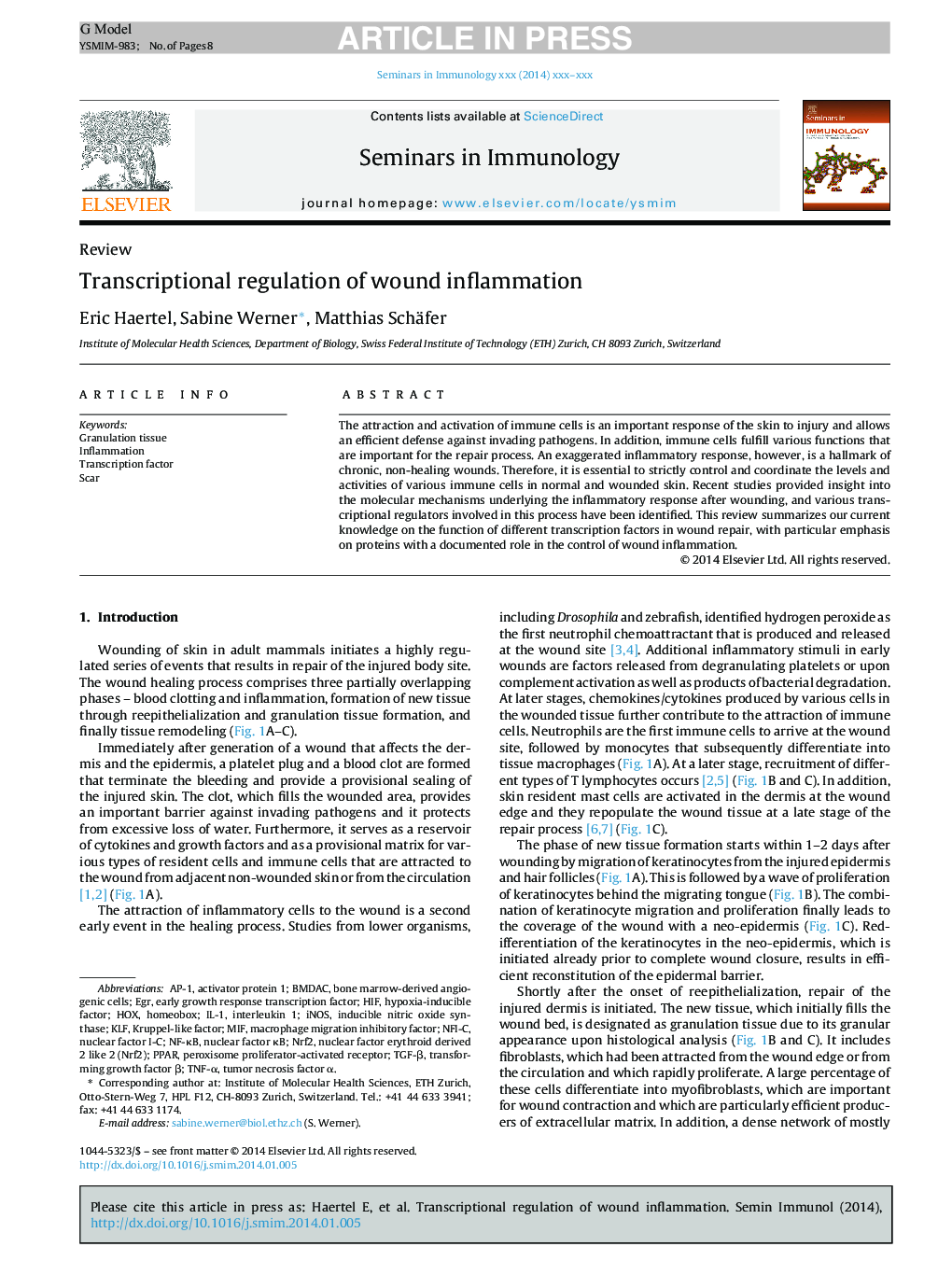| Article ID | Journal | Published Year | Pages | File Type |
|---|---|---|---|---|
| 6125857 | Seminars in Immunology | 2014 | 8 Pages |
Abstract
The attraction and activation of immune cells is an important response of the skin to injury and allows an efficient defense against invading pathogens. In addition, immune cells fulfill various functions that are important for the repair process. An exaggerated inflammatory response, however, is a hallmark of chronic, non-healing wounds. Therefore, it is essential to strictly control and coordinate the levels and activities of various immune cells in normal and wounded skin. Recent studies provided insight into the molecular mechanisms underlying the inflammatory response after wounding, and various transcriptional regulators involved in this process have been identified. This review summarizes our current knowledge on the function of different transcription factors in wound repair, with particular emphasis on proteins with a documented role in the control of wound inflammation.
Keywords
NF-κBTGF-βKLFHOXhomeoboxHIFAP-1PPARiNOSIL-1EGRNrf2inflammationinterleukin 1Granulation tissueTransforming growth factor βtumor necrosis factor αSCARinducible nitric oxide synthaseMIFTranscription factorMacrophage migration inhibitory factorKrüppel-like factorHypoxia-inducible factorTNF-αnuclear factor κBactivator protein 1peroxisome proliferator-activated receptor
Related Topics
Life Sciences
Immunology and Microbiology
Immunology
Authors
Eric Haertel, Sabine Werner, Matthias Schäfer,
